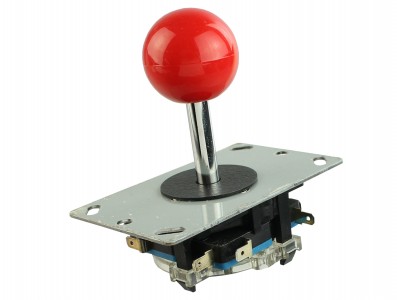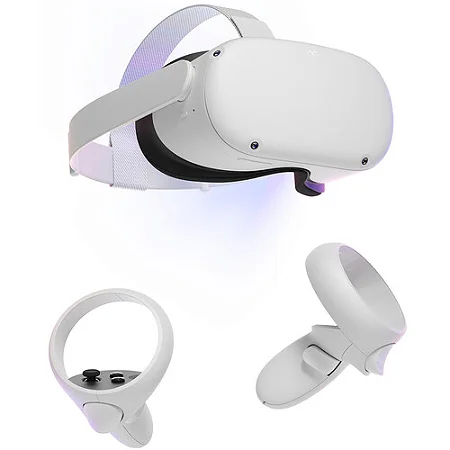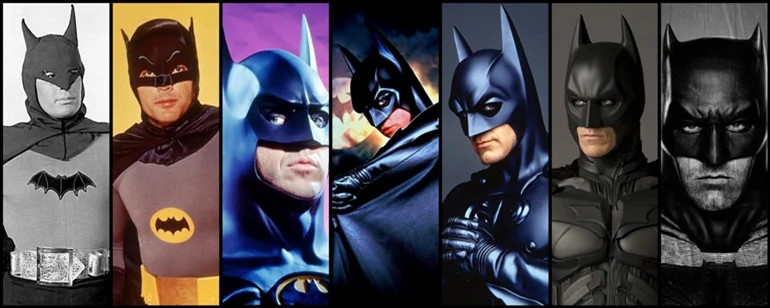Adverts
The fascinating journey of the evolution of video game controllers is a testament to technological advancement and the growing quest for total immersion in the world of digital gaming.
From the days when a simple joystick was the main tool for controlling digital adventures, to the era of motion sensors that detect every nuance of a gesture, controllers have been an essential bridge between the player and the virtual universe.
Adverts
This transformation not only reflects technical progress, but also a profound change in the way we interact with technology and the narratives it allows us to explore.
At the heart of this revolution is constant innovation, which seeks to improve the player experience, making it more intuitive and immersive. Video game controllers have evolved to capture complex movements and even respond to voice and touch commands, offering a level of interaction that seemed impossible just a few decades ago.
Adverts
We’ll explore how this evolution has not only redefined the gaming experience, but also expanded the audience for video games, making them accessible and engaging to people of all ages and abilities.
The evolution of video game controllers is a vivid example of how technology can transform entertainment. By delving into the history of these innovations, we’ll reveal how each technological advancement has shaped the way we connect with games and what the future holds for enthusiasts in this dynamic industry.
Get ready to travel back in time, where every click and movement tells a story of creativity and innovation, constantly redefining what it means to play. 🎮🚀

From Classic Joysticks to the First Ergonomic Controls
Ah, the good old days of square joysticks! 🎮 Who doesn't remember the iconic Atari 2600 controller? With its simple and straightforward design, it marked the beginning of an era. With a single button and a stick, it was already making people go crazy playing classics like Space Invaders and Pac-Man. But let's face it, you needed ninja skills to be a master of these games, right?
In the transition from the 80s to the 90s, things started to heat up. Nintendo introduced the NES and, with it, the famous rectangular controller with its two action buttons. This allowed for a different dynamic in games, and people started to get used to more complex controls. Later, Sega made an appearance with the Mega Drive, and then ergonomics started to gain a bit more attention. The controllers started to have a more rounded shape, adapting better to gamers' hands.
Related articles:
It was in the early 90s that the ergonomic revolution took a step forward with the Super Nintendo, bringing controls with shoulder buttons, further expanding the possibilities in games. Sony's DualShock, released with the PlayStation, was another turning point. It introduced analog sticks, which gave players incredible precision in their movements. From then on, joysticks gained a place in gamers' hearts and the journey was just beginning! 😍
Innovation at a Thousand: The Era of Motion-Sensing Controls
Get ready, because the revolution was even more radical when Nintendo decided to think outside the box with the Wii! The console brought motion sensors that transformed the way we interacted with games. Who has never had a party at home playing Wii Sports, shooting virtual strikes and doing crazy dances? 🕺💃 The motion-sensitive controller offered an immersive and unique experience.
The impact was so great that Sony and Microsoft didn't want to be left behind. Sony launched the PlayStation Move, which added an extra layer of immersion to PS3 games. With a shape that resembled a magic wand, the Move used cameras and sensors to capture every movement of the player. Microsoft jumped on the bandwagon with Kinect, which completely eliminated the use of physical controls. All you had to do was move and the game would respond! Amazing, right?
These innovations have not only transformed the way we play games, but also the way we exercise and interact socially. Who would have thought that a console could get so many people off the couch? And it doesn’t stop there! With the advancement of virtual reality, motion sensors have become even more sophisticated, allowing for almost real-life experiences. The immersion is total, and technology continues to evolve at a rapid pace.

The Future of Controls: Augmented Reality and Haptic Feedback
Now, let's travel to the future! 🚀 The advancement of video game controls hasn't stopped at motion sensors, and what's coming promises to be revolutionary. Augmented reality (AR) is already making its way into the gaming world. With it, players can interact with the virtual world superimposed on the real one, creating a unique experience. Just imagine walking around the room and finding Pikachus and Charizards on the loose, Pokémon GO style, but even more realistic!
Another major advancement is haptic feedback, which has been gaining prominence with the PS5 controllers. This technology allows players to feel different textures and resistances through the controller, adding an extra layer of immersion. Imagine climbing a mountain and feeling the friction in your hands, or firing a gun and noticing the difference between the triggers! These new features are making games increasingly sensory.
- Augmented reality: Integrates virtual elements into the real world.
- Haptic feedback: Provides a sense of touch and resistance.
- Total immersion: Dive into the game like never before!
The future is bright, and with each new generation of consoles, controllers continue to evolve, offering even more immersive and exciting experiences. Prepare your heart and fingers, because the next wave of innovation is coming!
Wireless Connections and Mobility in Gaming
Another highlight in the evolution of video game controllers was the advent of wireless connectivity. Do you remember when you had to sit glued to the TV, tangled up in the controller wires? With the launch of the Nintendo WaveBird, things changed! 🚀 Now, players could spread out around the room without the risk of knocking over the console. The freedom was total, and the fun, limitless!
This change was a game changer, as it allowed not only greater mobility, but also the possibility of creating more social and interactive gaming environments. Microsoft, with the Xbox 360, and Sony, with the PS3, also embraced this technology, which quickly became an industry standard.
In addition to eliminating wires, modern controllers are true command centers, equipped with speakers, microphones and even touch screens. Integration with social networks is another highlight, allowing players to share achievements and broadcast live in real time. Connectivity is so great that, today, a video game controller is almost like a smartphone!
Adaptive Controls and Inclusion in Games
Inclusion is the word of the moment, and video game controllers have not been left out of this trend. Microsoft pioneered the launch of the Xbox Adaptive Controller, designed especially for gamers with disabilities. With a modular and highly customizable design, it allows each player to adapt the gaming experience to their needs. This is a big step towards making gaming accessible to everyone, without exception! 🌍
Other companies are also starting to follow suit, developing accessories and controllers that adapt to different types of abilities. In addition, assistive technology is increasingly integrated, with voice commands and sensors that capture subtle movements. This expands the possibilities for fun and participation for players who previously did not have access to these experiences.
Inclusion in gaming isn’t just about creating adaptable products, it’s also about fostering a community that embraces diversity. This enriches the gaming universe and creates an environment where everyone can have fun and compete on equal terms. The gaming industry is moving towards a more inclusive and diverse future, and that’s awesome! 🌟

Conclusion
Over the decades, the evolution of video game controllers has reflected not only technological advances, but also a transformation in the way gamers interact with their virtual worlds. In the beginning, the simplicity of the joystick offered a direct and intuitive experience. However, as technology advanced, the need for more sophisticated controls arose, leading to the development of ergonomic and multifunctional gamepads. 🎮
With the arrival of the 21st century, the motion sensor revolution brought a new dimension to gameplay. Controllers like the Wii Remote and Kinect allowed players to engage in a more immersive experience, moving freely and using natural gestures. This innovation not only appealed to a wider audience, but also redefined what it meant to play video games. Additionally, motion sensors provided accessibility to a diverse audience, including those with physical disabilities.
Ultimately, the evolution of video game controllers is not just a story of technical advancements, but also a testament to the ongoing quest for a more immersive and accessible gaming experience. As we look to the future, it’s exciting to imagine the innovations that will continue to shape this landscape, offering players new ways to connect and interact with their favorite games. The journey of controllers is undoubtedly one of the most fascinating in the history of video games. 🚀




